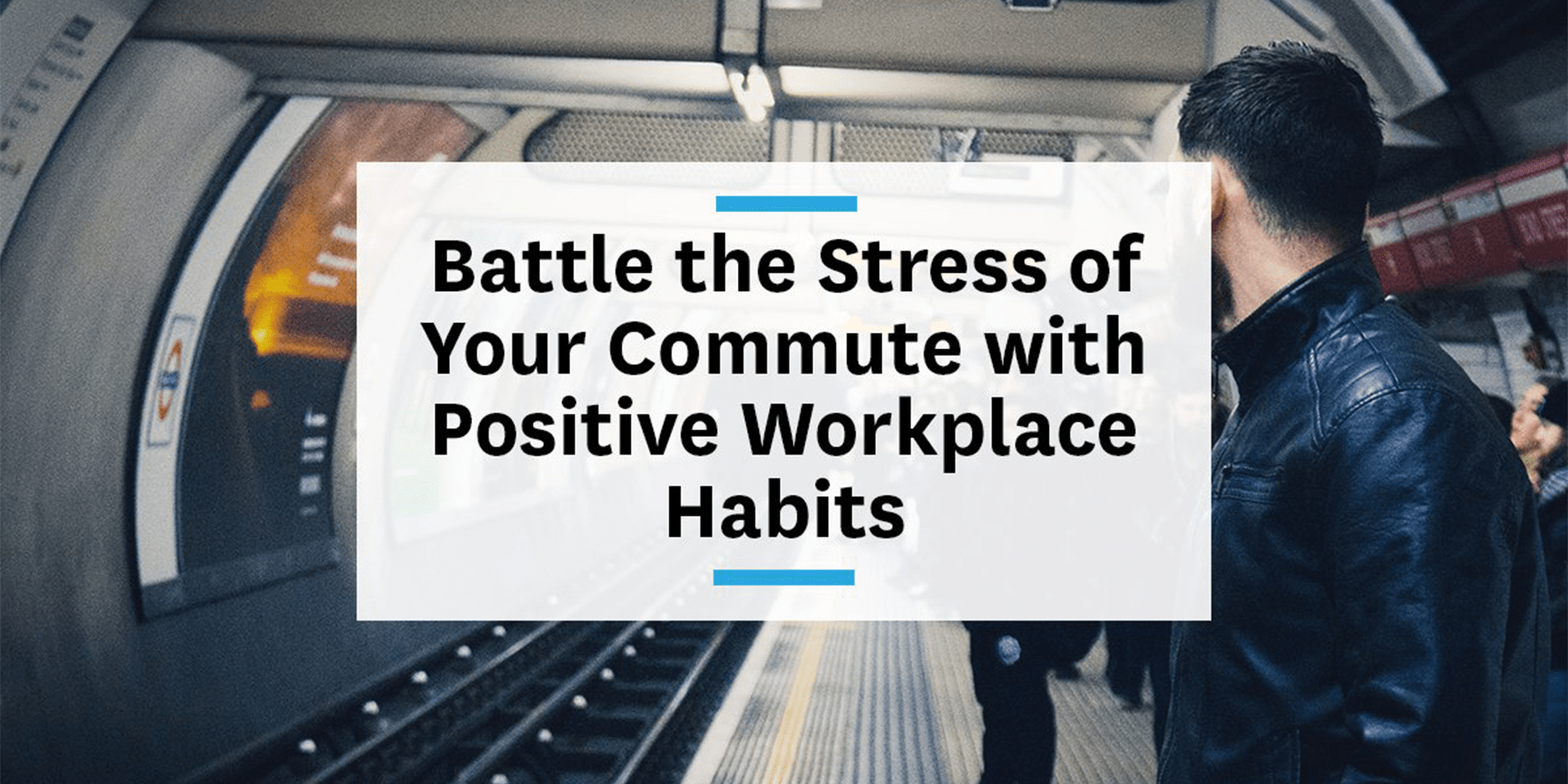The weight of a busy work day usually starts before you even get to the office. Leaving the house and setting off on your commute is sometimes, if not always, the most mentally draining part of your day. When you get to the office, you are required to regroup and recharge just to start your work. Fight the stress of commuting with positive workplace habits!

Creating positive work habits can turn your entire day around! One of the most effective ways of getting back on track is to take useful breaks throughout the day. We’re not just talking about getting up and refilling your coffee mug, but actually taking significant chunks of time to clear your mind and relieve your stress.
Make plans with yourself
Planning your breaks and treating them like meetings puts you in a mindset to get up and get away from your computer. Blocking time off on your calendar also makes your colleagues aware that you will be away from your desk. We’re not saying block off three hours a day so no one can ever meet with you, but five to 10 minutes every hour is an effective way to regain your focus. The amount of time you take isn’t as important as the act of taking the break itself.
Don’t use these breaks to go to an isolated corner of the office and look at your phone. Go get a coffee or tea, or just take a walk around the block. Getting outside during the day leads to lower stress and depression, as well as increased creativity.
Ditch the screens
Don’t just switch your computer screen for your phone screen during a break! Get away from all your screens. Too much screen time can lead to Computer Vision Syndrome (CVS) — a real thing, we promise. CVS is a medical issue caused by looking at a screen for extended periods of time, which can lead to headaches, neck and shoulder pain, and blurred vision.
The entire point of taking breaks at work is to let your brain rest, not to keep it working. If you’re on your phone, you still are consuming information, even if you are just looking at social media. When you get away from your desk, leave all of your screens behind.
Eat lunch away from your desk
You might think eating lunch at your desk means you’re going to be your most productive self. Let’s be honest, though: that’s almost never the case. In fact, staying at your desk during your lunch break can lead to employee burnout and significant decrease in productivity. Socializing at work creates a collaborative environment, along with cultivating a healthy relationship between you and your coworkers.
If you happen to be a member of the #saddesklunchclub, don’t worry, you’re not alone. Real lunch breaks are a rare occurrence in the United States, with about 60 percent of professionals saying they regularly eat lunch at their desks. The feeling of being judged and labeled as a poor worker is a significant factor that keeps people attached to their desks during their lunch break. Don’t let this pressure keep you from leaving to eat your lunch!
Working sprints
Two popular techniques for allocating your time between working and taking breaks are the Pomodoro Technique and the 52:17 Ratio (also known as the 100% Dedication Theory).
The Pomodoro Technique
The Pomodoro Technique is a productivity method that breaks up your time into work sprints followed by short breaks. Set a timer for a certain amount of time (typically 25 minutes) and then only focus on your task at hand. At the end of the 25-minute sprint, you take a five-minute break. At the end of four sprints, you can take a longer break — around 30 minutes. This scheduling allows for your complete focus to be on work, then rewarding yourself with a few minutes to focus on something else.
The 52:17 Ratio
The 52:17 Ratio is an approach similar to the Pomodoro Technique, in which you focus solely on your work for 52 minutes and break for 17 minutes. Although it involves more precise time-blocking, the concepts are almost identical.
Give yourself a break
Not every day or week in the office is the same — at least, in most cases. One thing that holds true is that your daily commutes can be a complete drain on your mental health and stress before you even get into the office. In fact, we know several people who now work at TransitScreen who previously had 2-hour long commutes involving several bus and metro changes. That’s no way to live! If you can’t make a change to your job just yet, making sure to take care of your mental health before and after your commute is a good start.




